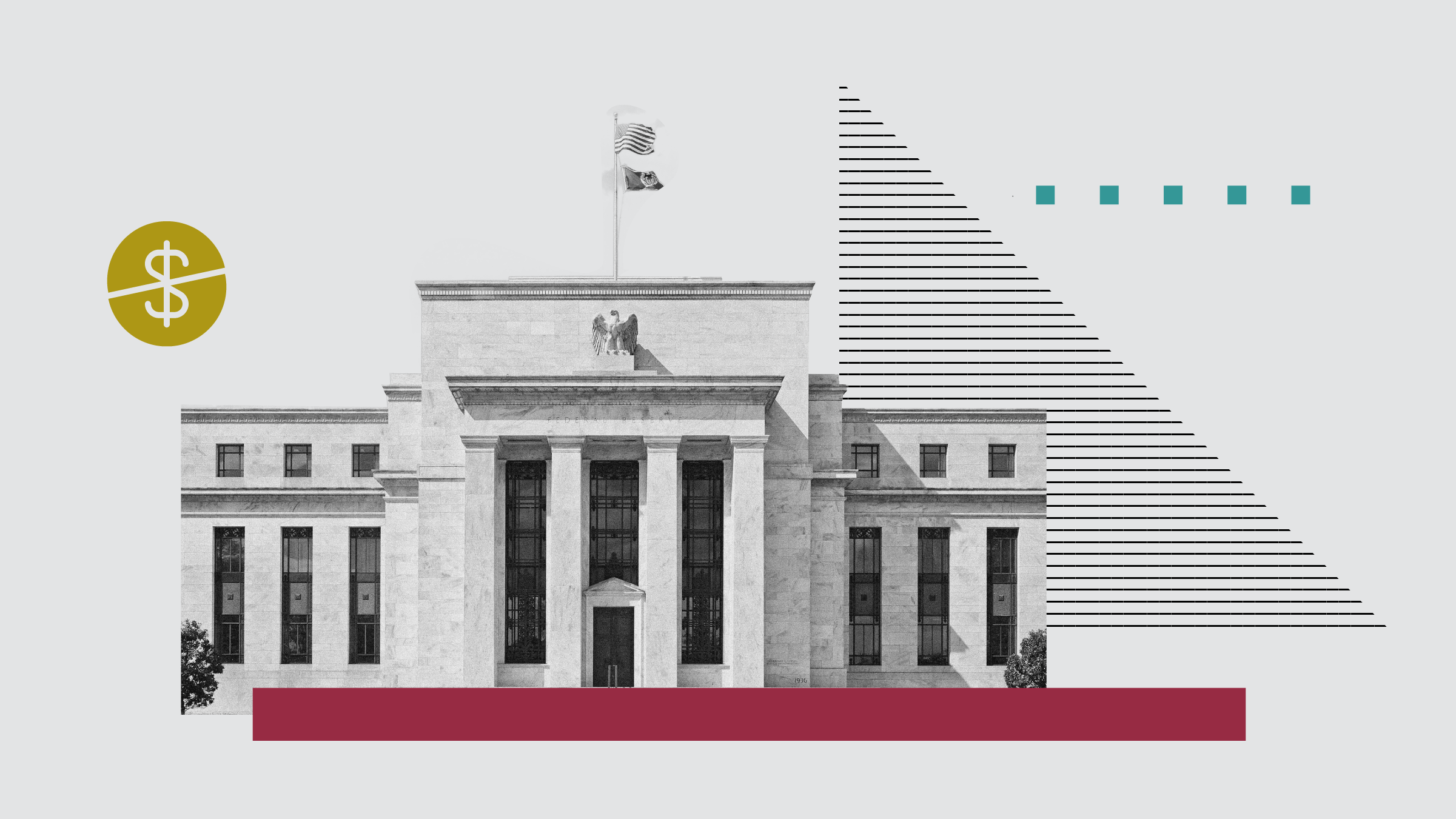Christine Benz: Hi, I'm Christine Benz for Morningstar. Many investors are familiar with how to analyse their equity holdings, but fewer have a comfort level with analysing their bond holdings. Joining me to discuss some key data points to focus on is Eric Jacobson; he is director of fixed-income research for Morningstar.
Eric, thank you so much for being here.
Eric Jacobson: Great to be with you Christine.
Benz: Eric, if I am a time-pressed individual, and I'm attempting to make sense of my bond fund or prospective bond fund, what are the key data points that you would urge me to home in on as I look across the data that's available on Morningstar?
Jacobson: Well, these will be familiar to any folks that have already done a little bit of a digging on their own, but they are crucial to mention of course. Number one is interest-rate risk. We always look at that as one of the first screens for bond funds, and normally, the easiest and best way to do that is to take a look at what the duration of the fund is. And generally speaking duration is an estimate that you can use to figure out how much your fund will either lose or gain if interest rates move a certain amount. So, for example, if you have a duration of five years, and interest rates move by 1%, you multiply the two together and you figure out that if interest rates rise by 1%, you'd expect the fund to lose 5% and vice versa. If interest rates were to fall 1%, you would expect the fund to rise 5%. It's crucial though that I mention it's an estimate. It works well for some kinds of funds better than others, and depending on how the fund company calculates it that there can be slight differences. So, you might find a period where it doesn't work out exactly, but it's a good tool to help you figure out at least what framework you're in.
Benz: Roughly, Eric, for which fund types is duration most useful, and where should I really discount heavily because it's not going to be a super useful figure for me?
Jacobson: That's a great point. It's going to be most useful for funds that are most like Treasuries. So, in other words, government funds and hopefully even government funds with mortgages, though it's a very difficult thing to calculate, and duration can move around a lot with mortgage funds. But generally speaking [duration is most useful for] really high-quality funds. To some degree with municipals, you can rely on it, but again municipals are not exactly like Treasuries. So, it's not a perfect way to measure it.
Once you get out of that sphere, and you're into something where there is a lot more credit risk, like high yield for example, duration is a lot less meaningful and important at least in terms of telling you what's going to happen when interest rates move. All things being equal, a longer-duration high-yield fund will still be more market-sensitive than a shorter-duration one, but it might not really move much when Treasury yields move.
Benz: So, once I've gotten my arms around that interest-rate sensitivity question, what's my next step in terms of data points to focus on?
Jacobson: Sure. Well, the next big one of course is going to be credit risk, and what we tend to do is look at how a fund is broken down by credit category. Now, you've probably heard a lot of managers talk before about how they don't really trust the rating agencies and they do a lot of their own internal credit work. That's all perhaps true, but you can still look at the third-party ratings that a fund gets, or perhaps doesn't get if you have nonrated holdings, to at least gauge roughly how much credit risk your fund is taking.
It's especially valuable if you're looking for a core fund, and it's supposed to be a relatively high-quality fund. But you notice, for example, that there are a lot of securities, a large percentage, for example, in the BBB sector. Now, that BBB is going to be the lowest of the high-quality sectors. It's almost down to junk level. It doesn't mean you own a junk-bond fund necessarily, but it's a signal to you that this isn't a government fund. It shouldn't be used as a substitute for a government fund. And you need to be aware that it's going be taking on more credit risk than say a fund that has all government securities or say 70% in AA for example.
Benz: Once you've gotten your arms around the key aspects of the Morningstar Fixed-Income Style Box, what would the next data points that one should focus on be?
Jacobson: There a lot of places you can go from here on, but if you're just looking to do sort of a quick hit and figure out what's going on with the fund at the high level, my next thing would be to try and look and see how the fund performed during recent prior crises.
So, for example, what happened to the fund that you're looking at during 2008? In many cases what you'll find is that funds that did really well after the crisis did very poorly during the crisis. That's something you might want to dig into a little further. It may be that the manager has changed. It may be that the fund's strategy has changed since then. We've seen a lot of that happen, of course. But if the fund hasn't changed either of those things, and it says, "This is the kind of risk we take," you don't necessarily have to be thinking, "Oh, we're going to face another 2008," but at least it does help you see what some of the worst-case scenarios are.
Benz: If I'm looking at a fund's portfolio, Eric, are there any disclosures or bits of information that automatically are red flags to investors, something that would highlight that there is some risk going on in the portfolio that I should be paying attention to?
Jacobson: I'd qualify this by saying these aren't always extremely bad things to find. This is often a tough thing to figure out, but if you look at the schedule of investments, and you see that a fund has more in total investments than it has in net assets, that's an indication that the fund might be using leverage.
Leverage essentially is like margin borrowing. It can accentuate both the ups and the downs in your portfolio. Like I said, it's not automatically a bad thing, especially if it's only a few percentage points; there might be a lot of good reason to use it especially right now when the short-term interest rates are very low. But if you see a case where the total assets are say 120%, 130%, or 140% of your net assets, that's an indicator that there is extra risk in the portfolio, and you want to hopefully see that the manager has explained why he or she is doing that, somewhere else in their annual report, their semi-annual report, or what have you.
Benz: How clearly are funds required to disclose that information? Do you have to do your own digging to find out if they're using leverage, or is there a certain threshold over which they have to disclose it to shareholders?
Jacobson: That's a really timely question because the fact is it has to be disclosed numerically. It has to be in the accounting statements. That's why, for example, I suggested you actually look at total assets versus net assets, but it doesn't necessarily, at this point, have to be anything they mention in the text. And the reason I say it's timely is because Oppenheimer Funds just settled with the SEC [US regulator] over something that happened during the financial crisis, and the company specifically mentioned the fact that the fund was using a leverage and didn't talk about it with its investors. So, unfortunately, you do to have to dig in a little bit for that, and, unfortunately, there are more ways than one that you can have leverage develop in the fund.
Benz: In addition to looking for leverage, are there any other signals that I should look for in an effort to determine if there are extra risks embedded in a given portfolio?
Jacobson: Yes, and again this falls under the rubric of not automatically a bad thing. But something to be aware of is if you look at these statements of investments and you see after that that there are a lot of derivatives in the portfolio--now, we're talking about credit default swaps in particular interest-rate swaps perhaps and also currency swaps in futures--some of those things might be very reasonable to be in the portfolio. Lots of managers today use interest-rate swaps to manage the duration of a fund, or they use currency either swaps or futures in order to hedge risks say, for example, if they buy a bond in the United Kingdom or in the eurozone and they want to eliminate the currency risk. But by and large, if you go down there, and you see that there a lot of swaps or a lot of credit default swaps in particular, you hopefully are going to have some mention of that in the other disclosures that the fund is making to help explain to you what [the managers] doing there and why. This is because if the managers are using lots and lots of those, they can, again, be developing a type of leverage in the portfolio that you might not otherwise know about.
Benz: Would some of these swaps be clearly disclosed? Would they be labelled as such, or would they have other arcane names that might not say "credit default swap"?
Jacobson: Well, it's good news, bad news. The names themselves are going to be typically very arcane and have abbreviations and what have you, and you may not be able to tell just from the name itself what it is. But it will usually be classified under a list that says these are credit default swaps. These are either the purchase or the sale of protection, which can help you understand whether or not essentially it's a long bet that adds market exposure or a short type of bet that actually takes away market exposure.
Benz: In talking to you, Eric, it's pretty clear that there are some disclosures in fund portfolios that are a little bit arcane, a little bit difficult to figure out, if you are not steeped in this type of research as you are. Are there any disclosures that you think fund companies could be doing better, or are there any firms that you would hold out as good examples of good disclosure of complicated investment types?
Jacobson: Well, I think that almost every firm has a lot of room to improve, but let me just say that pretty obviously I think that they should be disclosing more and talking more about leverage in all cases. What I really would like to see many of them do is, let's say they are using those interest-rate swaps or they are using a lot of derivatives whether the credit default swaps or others, do a better job of listing them, disclosing them, and helping their investors understand what they mean. It may not be enough. It isn't frankly enough just to do the list the way that the accounting rule is required. You need to have more tables, more graphs, and more explanation. The bottom line is the data has to be useful.
And ultimately what I would say is fund companies should tell your investor what you would tell your mother. It sounds like a fairly simple and silly way to put it perhaps, but it's crucial and that's the test that they ought to be looking at.
You asked me what some of the firms are that do a good job. Lately, we've been particularly impressed by a lot of the disclosure that JPMorgan funds has made for some of its portfolios [that have] really complicated strategies in, for example, JPMorgan Strategic Income Opportunities, which is sort of an absolute return, non-traditional bond fund. But that's a portfolio where the company is having monthly conference calls. It is also putting out lots of monthly data. Some of it's pretty complicated. It might not be for everyone. But at the very least, it shows a lot of respect for their investors and a willingness to show a lot of data and information and package it in ways that might be more useful.
Benz: Eric, well, thank you so much for being here, sharing some ideas of ways that funds could improve in terms of disclosure and also some ways that investors can do their homework. Thank you so much for being here.
Jacobson: My pleasure, Christine. Thank you.
Benz: Thanks for watching. I'm Christine Benz for Morningstar.
























